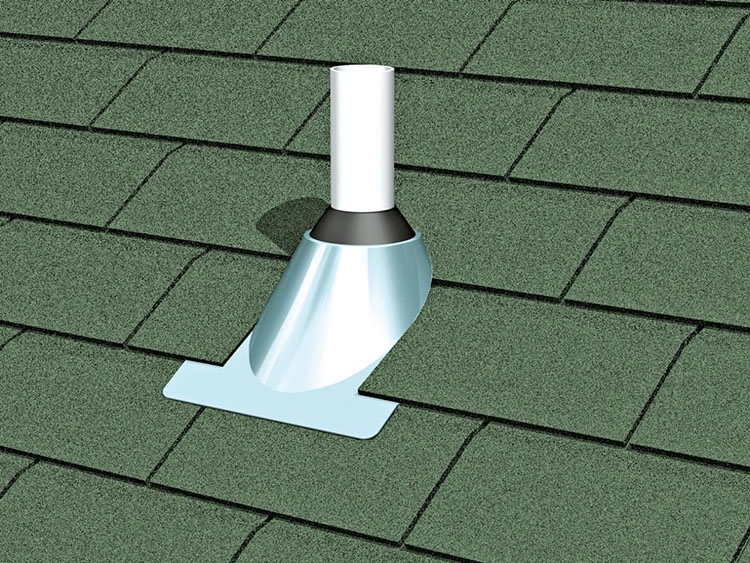 
Over 698,000 strictly plumbing related posts
Plumbing education, information, advice, help and suggestions are provided by some of the most experienced plumbers who wish to "give back" to society. Since 1996 we have been the best online (strictly) PLUMBING advice site. If you have questions about plumbing, toilets, sinks, faucets, drains, sewers, water filters, venting, water heating, showers, pumps, and other strictly PLUMBING related issues then you've come to the right place. Please refrain from asking or discussing legal questions, or pricing, or where to purchase products, or any business issues, or for contractor referrals, or any other questions or issues not specifically related to plumbing. Keep all posts positive and absolutely no advertising. Our site is completely free, without ads or pop-ups and we don't tract you. We absolutely do not sell your personal information. We are made possible by: 
|
|
Author:
clanderson (NE)
Question here and expert opinion needed. We have 3 current roof vent pipes with the rubber/neoprene gasket flashing. 2 of these gaskets have failed and we temporarily re-flashed with metal tape which has worked for a couple of yrs now waiting for the need of a new roof. Time for new roof now. In your opinion would it be better to continue venting through the roof with new lead flashing (good for 50+ yrs), or forego the roof vent with AAV's in the attic? I don't want to have another rubber/neoprene gasket failure in 15 yrs requiring replacement.
|
|
Post Reply
|
|
|
Author:
bsipps (PA)
A vent through the roof is the best option
AAV’S are only supposed to be used when penetrating the roof is not a feasible option
By code the vent size penetrating the roof must match the size of the incoming sewer and here in Pennsylvania a minimum of 3” VTR with 2” being minimum for additional VTR
|
|
Post Reply
|
|
|
Author:
bernabeu (SC)
a plumbing system's vent through the roof is NOT an option but a REQUIREMENT
roof vents pass gas in BOTH directions
an AAV is 'one way' and only ADMITS air into the piping
hence the name: air admittance valve
ps. there are QUALITY flashings available

on said flashing(s) the 'seal' can be replaced with NO roofing work
pps. there is NO NEED to wait for a 'new roof' in order to install new flashing
==============================================
"Measure Twice & Cut Once" - Retired U.A. Local 1 & 638
Edited 1 times.
|
|
Post Reply
|
|
|
Author:
clanderson (NE)
This video by Studor [www.youtube.com] is stating that through the roof venting is now the only venting needed. As for the flashing references, I won't trust a neoprene/rubber/synthetic whatever anymore. I know a lead flashing will last 50+ years. As for the temporary fix it was meant to be only temporary as we knew the roof was going to need replacing. We were kind of hoping for a hail storm so the insurance would cover most of it but as farmers we know you can't trust the weather. So what is the consensus? Through the roof venting is better even though it could potentially have problems with roof leakage, or as this Studor video says AAV's are revolutionizing venting?
|
|
Post Reply
|
|
|
Author:
clanderson (NE)
The reason we'd consider the AAV's is because its the same side of the roof we'd like to put solar panels on that lay flat on our pitched roof.
|
|
Post Reply
|
|
|
Author:
bernabeu (SC)
Through the roof venting is both REQUIRED and NECESSARY.
Said vent allows gas flow in BOTH directions - IN and OUT of the piping - said flow is NECESSARY for proper plumbing system operation.
An AAV only allows air flow INTO the piping and is designed for local use on an interior fixture ONLY.
You can always reroute the pipe vent to another place on the roof.
As per Studor:
Studor air admittance valve’s (AAVs) are used as a method for venting traps for fixtures and waste receptors. AAVs reduce the amount of vent piping required to terminate outdoors. An AAV is designed to open to admit air into the venting and drainage system when negative pressures (less than atmospheric pressure) occur in the vent system. An AAV closes by gravity to seal the vent terminal when the vent system pressure is equal to atmospheric pressure. At vent system pressures greater than atmospheric pressure, an AAV remains closed and seals tighter under greater pressure by the nature of the design. The closed AAV prevents any vapor in the vent system from entering the building.
AAVs are required to conform to one of three ASSE standards. Stack-type air AAVs shall conform to ASSE 1050. Individual and branch-type AAVs shall conform to ASSE 1051. AAVs shall not be installed in non-neutralized special waste systems as described in Chapter 8 of the International Plumbing Code (IPC) except where such valves are in compliance with ASSE 1049, are constructed of materials approved in accordance with Section 702.5 of the IPC and are tested for chemical resistance in accordance with ASTM F 1412. Air admittance valves shall not be located in spaces utilized as supply or return air plenums. Air admittance valves without an engineered design shall not be utilized to vent sumps or tanks of any type.
The Studor Mini-Vent®, Maxivent®, Redi Vent®, Tec-Vent® must be installed in accordance with the manufacture’s installation instructions and the conditions noted in the ICC-ES PMG Product Certificate PMG-1025.
BUT
There still must be at least ONE vent through (or above the level of) the roof.
ps. while the video states an AAV may be installed in the attic, said AAV would merely serve a local fixture on the floor below NOT replace the required through the roof main vent
==============================================
"Measure Twice & Cut Once" - Retired U.A. Local 1 & 638
Edited 1 times.
|
|
Post Reply
|
|
|
Author:
clanderson (NE)
Thank you so much for elucidating this information. I can't switch the venting to the other side of the roof as that is the "public" side. So will have to perhaps consolidate the venting to one penetration. There are currently 3. Any thing taboo about consolidation?
|
|
Post Reply
|
|
|
Author:
bernabeu (SC)
All vent piping must be pitched downwards toward the fixture(s) served.
No 'pockets' or 'bellies' allowed.
Condensation must flow freely back to fixture piping served by vent.
Be careful of pipe sizing - main vent minimum of 3" ( some jurisdictions require 4" ) through the roof.
Bringing all the existing vents into a 'main header', then going through the roof would be ideal.
==============================================
"Measure Twice & Cut Once" - Retired U.A. Local 1 & 638
Edited 1 times.
|
|
Post Reply
|
|
|
Author:
packy (MA)
yeah, in a single family house you have no problem tying all vents together.
|
|
Post Reply
|
|
|
Author:
ArthurPeabody (NM)
An AAV can replace a separate vent leg when the eventual drain is vented itself.
You can run a drain leg only so far, because it has to be inclined at least ¼" per foot, and the bottom of the beginning of the drain has to be below the top of the end of the drain. For instance, for 1½" pipe the maximum run is 42"; for 2" it's 60". (That's UPC; the international code is longer.)
If you want to use a longer run, you have to add a vent leg along the way.
If code allows, you can use an AAV. UPC doesn't mention AAVs. My state (NM)'s code refers to the UPC but adds a few exceptions. One of them allows AAVs. I don't know if every state does. NM says, 'Exception: When approved by the authority having jurisdiction, a fixture or fixture branch may be permitted to be vented by the use of an approved Air Admittance Valve (AAV) in accordance with its listing when conventional venting termination methods are not available.' Which I read to mean that random citizen can't do it on his/her own. All the home, hardware, and plumbing stores have them on the shelf, and I can't imagine that conventional methods aren't ever available, as unhappy as you may be to have them.
My dentist has them in his office; all the drain plumbing is in the open. There are holes in the wall where they used to exit, so it's not necessary. I assume he's careful enough to follow these rules.
I decided to switch to 2" pipes rather than have separate vent legs or AAVs.
|
|
Post Reply
|
|
|
Author:
hj (AZ)
And, back in the 50's, Orangeburg said that it was superior to, and, would eliminate cast iron sewer lines.
|
|
Post Reply
|
|
|
Author:
vic (CA)
We all recognize that all mechanical devices will fail eventually. What we can't know is when each will fail. Some fail quickly, some take a very long time before they break down.
All AAV's are mechanical devices and so non mechanical venting (standard venting) if installed properly are far safer and a superior way to go irregardless of what some plumbing codes might allow as well as what some AAV mfrs might claim.
|
|
Post Reply
|
|
|
Author:
bernabeu (SC)
DITTO
==============================================
"Measure Twice & Cut Once" - Retired U.A. Local 1 & 638
|
|
Post Reply
|
Please note:
- Inappropriate messages or blatant advertising will be deleted. We cannot be held responsible for bad or inadequate advice.
- Plbg.com has no control over external content that may be linked to from messages posted here. Please follow external links with caution.
- Plbg.com is strictly for the exchange of plumbing related advice and NOT to ask about pricing/costs, nor where to find a product (try Google), nor how to operate or promote a business, nor for ethics (law) and the like questions.
- Plbg.com is also not a place to ask radiant heating (try HeatingHelp.com), electrical or even general construction type questions. We are exclusively for plumbing questions.
Search for plumbing parts on our sponsor's site:
Special thanks to our sponsor:

|




